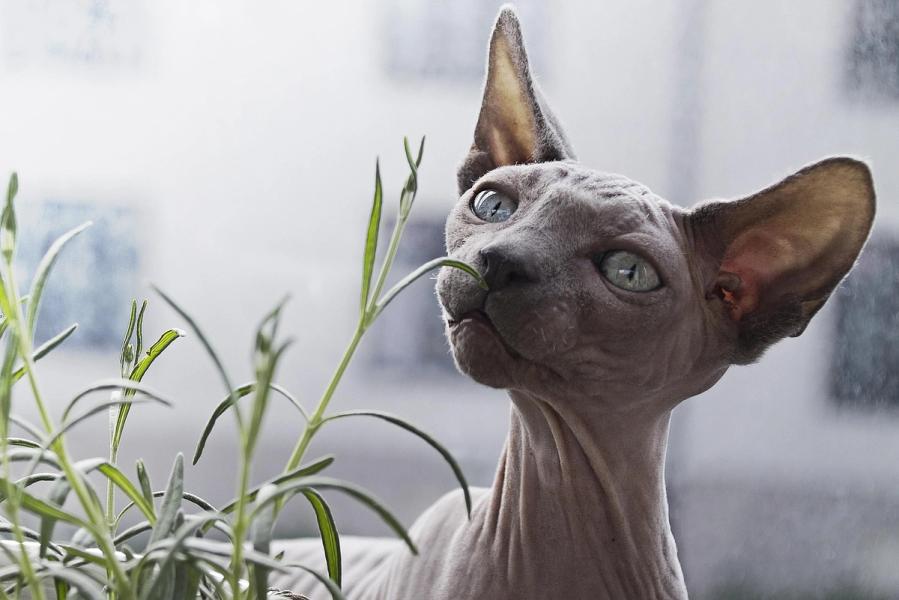
Top 10 Cat Breeds That Shed the Least
Published: 3/28/2025
For many cat lovers, the joy of feline companionship is occasionally tempered by the endless tumbleweeds of fur drifting across floors and furniture. Whether you’re tired of vacuuming every other day or dealing with allergies, shedding is a common concern—and often a dealbreaker—for potential cat owners.
While no cat is truly shed-free, some breeds naturally produce far less loose fur than others. Their unique coat types, genetics, and grooming needs make them a much better fit for those seeking a cleaner home environment or hoping to keep allergy symptoms at bay.
In this article, we’ll explore cat breeds that are known for shedding the least, why some cats shed more than others, and how to manage fur more effectively—regardless of the breed you choose.
Understanding Cat Shedding
Before diving into the breeds themselves, it’s helpful to understand why cats shed in the first place. Shedding is a natural process that helps cats regulate their body temperature and renew their coat. Most cats shed lightly throughout the year, with heavier periods in the spring and fall as they adjust to seasonal temperature changes.
Shedding levels are also influenced by coat type. Cats with a double coat—meaning they have both an outer layer of guard hairs and a soft undercoat—tend to shed more, especially during seasonal shifts. Single-coated breeds, on the other hand, have only one layer of fur and typically lose much less hair.
There’s also the question of allergies. While some low-shedding breeds are often marketed as “hypoallergenic,” it’s a bit of a myth. Most cat allergies are triggered by proteins found in saliva, skin, and dander—not just fur. So while less shedding may reduce the spread of allergens, it doesn’t necessarily make a cat allergy-free.
Understanding these basics helps set realistic expectations—and highlights just how valuable the right breed choice can be for managing your home and health.
Top 10 Cat Breeds That Shed the Least
If keeping fur to a minimum is high on your list of priorities, these cat breeds offer some of the lowest-maintenance coats in the feline world. While each one is unique in personality and care needs, they all have one thing in common: they won’t leave your home covered in hair.
1. Cornish Rex
The Cornish Rex has a distinct coat made up of only a soft, downy underlayer—no guard hairs or outer coat. This gives them their signature curly look and results in very little shedding.
Best suited for: Warm, draft-free homes and owners who enjoy a quirky, playful companion.
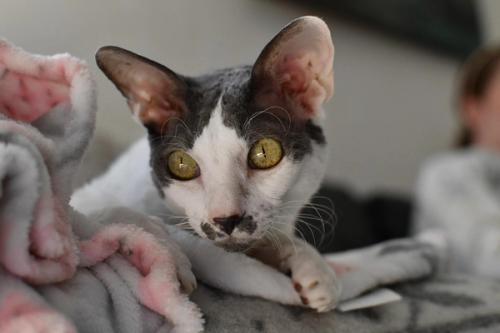
2. Devon Rex
Closely related to the Cornish Rex, the Devon Rex also sports a wavy, short coat with minimal shedding. Their fur is so fine that it requires gentle handling and occasional brushing to prevent buildup on the skin.
Best suited for: Those who want a lively, affectionate cat with a low-fuss grooming routine.
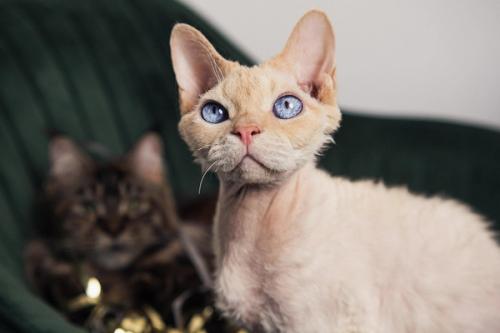
3. Sphynx
Though nearly hairless, the Sphynx cat requires consistent care—not for shedding, but for skin health. Their lack of fur means oils aren’t absorbed, so weekly baths are essential.
Best suited for: Cat lovers seeking an outgoing, high-maintenance companion without the fur fallout.
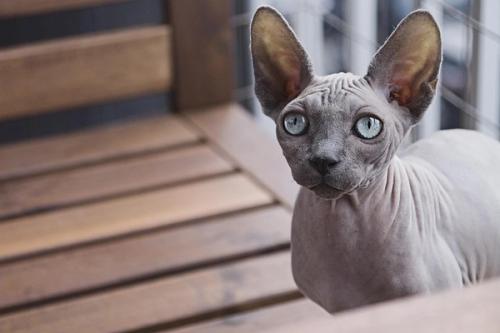
4. Bengal
Bengals have short, dense, and luxuriously soft coats that shed less than many other breeds. Their grooming needs are minimal, and their coats tend to stay sleek with the occasional brushing.
Best suited for: Active households looking for a striking, low-shedding breed with energy to spare.
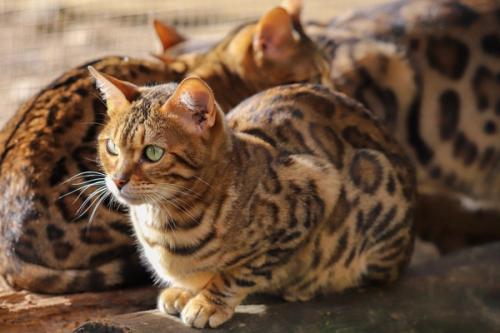
5. Russian Blue
Despite having a plush double coat, the Russian Blue is surprisingly low-shedding most of the year. They shed more during seasonal changes but are otherwise quite manageable.
Best suited for: Owners who prefer a quiet, reserved cat with elegant looks and moderate grooming needs.
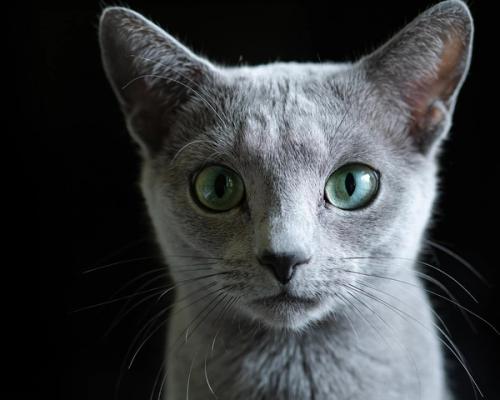
6. Burmese
With their short, satin-like coats, Burmese cats shed very little year-round. A quick weekly brush is usually enough to keep their coat in good shape.
Best suited for: Families or individuals looking for a loving, people-focused cat that’s easy to maintain.
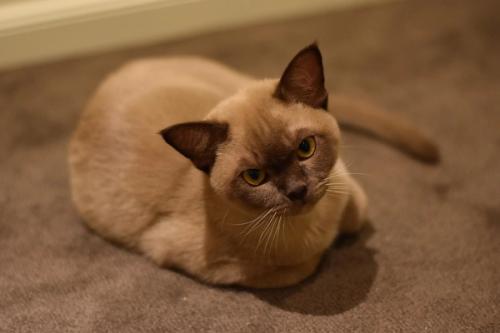
7. Singapura
The Singapura is one of the smallest cat breeds and has a short, fine coat that requires very little grooming. Shedding is minimal and easy to manage with occasional brushing.
Best suited for: Those looking for a playful, low-shedding cat in a compact package.
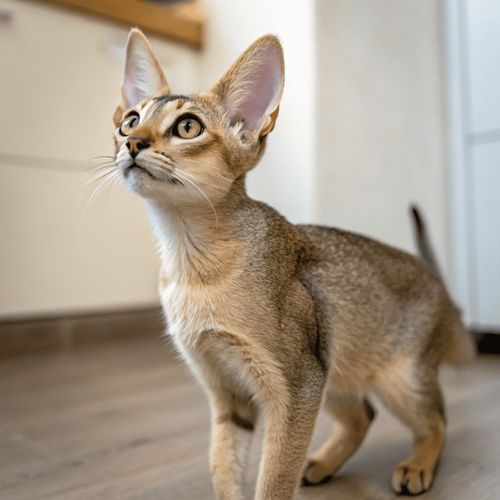
8. Siamese
Known for their sleek, single-layer coats, Siamese cats shed very lightly most of the year. Shedding may increase slightly during seasonal changes, but upkeep remains simple.
Best suited for: People who want a vocal, interactive cat with a clean grooming profile.
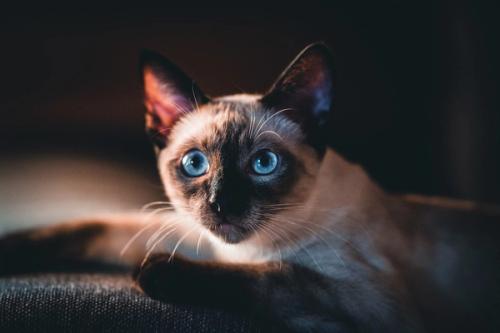
9. Balinese
Though they have medium-length fur, Balinese cats lack the dense undercoat that often leads to heavy shedding. Their silky coats require occasional brushing to prevent tangles.
Best suited for: Cat lovers who prefer a graceful, affectionate breed with a manageable grooming routine.
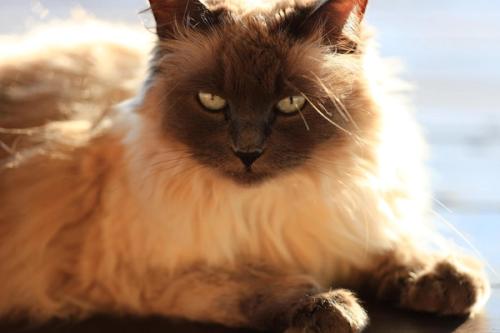
10. Peterbald
The Peterbald can range from hairless to having a very fine coat, similar to the Sphynx. Shedding is virtually nonexistent, but regular bathing is required to keep the skin clean.
Best suited for: Owners prepared for skincare routines but wanting a fur-free living space.
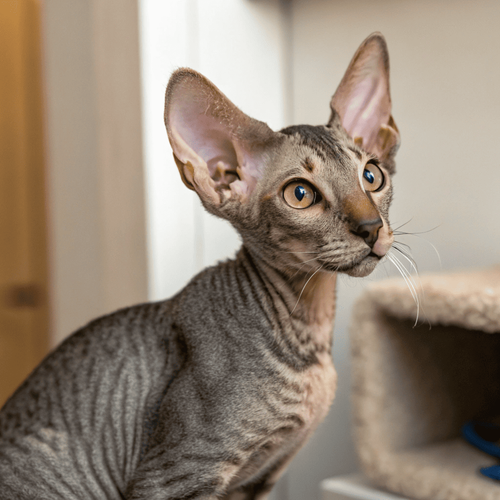
Tips for Managing Shedding in Any Cat
Even breeds that shed less still benefit from a consistent grooming routine. Here’s how to stay ahead of the fur, no matter your cat’s coat type:
- Brush regularly: Use a soft-bristle or rubber grooming brush tailored to your cat’s coat length and type. Even short-haired and low-shedding cats can benefit from weekly brushing to remove loose fur and distribute skin oils.
- Feed a high-quality diet: Nutrition plays a huge role in skin and coat health. Look for cat food rich in omega fatty acids and ensure your cat stays well hydrated.
- Bathe hairless breeds: Cats like the Sphynx and Peterbald need weekly baths to prevent oil and dirt buildup. Use a gentle, cat-specific shampoo and dry thoroughly afterward.
- Maintain a clean home: A vacuum with a pet hair attachment, lint rollers, washable throw blankets, and smooth-surface furniture can go a long way in keeping shedding from taking over your space.
Conclusion
If fur-covered furniture and daily vacuuming aren’t your thing, you’ve got options. From the nearly bald Sphynx to the sleek Russian Blue, there are plenty of breeds that shed far less than the average cat. While low-shedding cats still require regular grooming and care, the cleanup is significantly reduced.
Managing coat care doesn’t have to be a chore—it can even become a bonding moment between you and your pet. And as long as you’re prepared to meet their specific needs, any of these breeds can make a loving, low-fur addition to your household.
Choosing a cat is about more than just their coat—but for those seeking a cleaner, more manageable pet experience, these breeds are a perfect place to start.